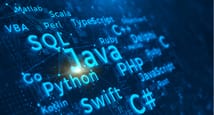- Course Introduction
- Java Foundation
- C++ Foundation
- Jira
Quick Facts
| particular | details | |||
|---|---|---|---|---|
|
Medium of instructions
English
|
Mode of learning
Self study, Virtual Classroom
|
Mode of Delivery
Video and Text Based
|
Course and certificate fees
Fees information
₹ 75,000
certificate availability
Yes
certificate providing authority
Henry Harvin
The syllabus
Live Course 1: Programming for Non Programmers
Live Course 2: Statistics for Data Science
- Lesson 1 - Introduction
- Lesson 2 - Sample or Population Data?
- Lesson 3 - The Fundamentals of Descriptive Statistics
- Lesson 4 - Measures of Central Tendency, Asymmetry, and Variability
- Lesson 5 - Practical Example: Descriptive Statistics
- Lesson 6 - Distributions
- Lesson 7 - Estimators and Estimates
- Lesson 8 - Confidence Intervals: Advanced Topics
- Lesson 9 - Practical Example: Inferential Statistics
- Lesson 10 - Hypothesis Testing: Introduction
- Lesson 11 - Hypothesis Testing: Let’s Start Testing!
- Lesson 12 - Practical Example: Hypothesis Testing
- Lesson 13 - The Fundamentals of Regression Analysis
- Lesson 14 - Subtleties of Regression Analysis
- Lesson 15 - Assumptions for Linear Regression Analysis
- Lesson 16 - Dealing with Categorical Data
- Lesson 17 - Practical Example: Regression Analysis
Live Course 3: Data Science with R
- Lesson 1 - R Basics
- Lesson 2 - Data Structures in R
- Lesson 3 - R Programming Fundamentals
- Lesson 4 - Working with Data in R
- Lesson 5 - Handling Data in R
- Lesson 6 - Introduction to Business Analytics
- Lesson 7 - Introduction to R Programming
- Lesson 8- Data Structures
- Lesson 9 - Data Management in R
- Lesson 10 - Advanced Data Visualization
- Lesson 11 - Descriptive Statistics in R
- Lesson 12 - Regression Analysis
- Lesson 13 - Decision Tree: Classification
- Lesson 14 - Clustering: K-means and Hierarchical
- Lesson 15 - Association Rule Analysis
Course 4: Data Science with Python
- Lesson 1 - Python Basics
- Lesson 2 - Python Data Structures
- Lesson 3 - Python Programming Fundamentals
- Lesson 4 - Working with Data in Python
- Lesson 5 - Working with NumPy Arrays
- Lesson 6 - Data Science Overview
- Lesson 7 - Data Analytics Overview
- Lesson 8 - Statistical Analysis and Business Applications
- Lesson 9 - Python Environment Setup and Essentials
- Lesson 10 - Mathematical Computing with Python (NumPy)
- Lesson 11 - Scientific Computing with Python (Scipy)
- Lesson 12- Data Manipulation with Pandas
- Lesson 13 - Data Visualization in Python using Matplotlib
Course 5: Natural Language Processing
- Lesson 1 - Introduction to Natural Language Processing
- Lesson 2 - Feature Engineering on Text Data
- Lesson 3 - Natural Language Understanding Techniques
- Lesson 4 - Natural Language Generation
- Lesson 5 - Natural Language Processing Libraries
- Lesson 6 - Natural Language Processing with Machine Learning and Deep Learning
- Lesson 7 - Speech Recognition Technique
Course 6: Tableau
- Lesson 1 - Getting Started with Data Visualization and Tableau
- Lesson 2 - Working with Tableau
- Lesson 3 - Working on Metadata and Data Blending
- Lesson 4 - Deep Diving with Data and Connections
- Lesson 5 - Creating Charts
- Lesson 6 - Adding Calculations to your Workbook
- Lesson 7 - Mapping Data in Tableau
- Lesson 8 - Dashboards and Stories
- Lesson 9 - Visualizations for an Audience
- Lesson 10- Integration of Tableau with R and Hadoop
Course 7: Simulated Data Science Projects
- Retail
- E-commerce
- Web & Social Media
- Banking
- Supply Chain
- Healthcare
- Insurance
- Entrepreneurship /Start-Ups
- Finance & Accounts
Electives 1: Artificial Intelligence
- Module 1: Neural Network
- Module 2: Computer Vision
- Module 3: Natural Language Programming (NLP)
Electives 2: Machine Learning
Electives 3: Deep Learning with KERA & Tensorflow
Articles
Popular Articles
prev
next
Latest Articles
Online Data Science Course Eligibility Criteria: Syllabus, Skills & Subjects
Updated On 29 Feb, 2024
prev
next


 Brochure
Brochure Enquire
Enquire










